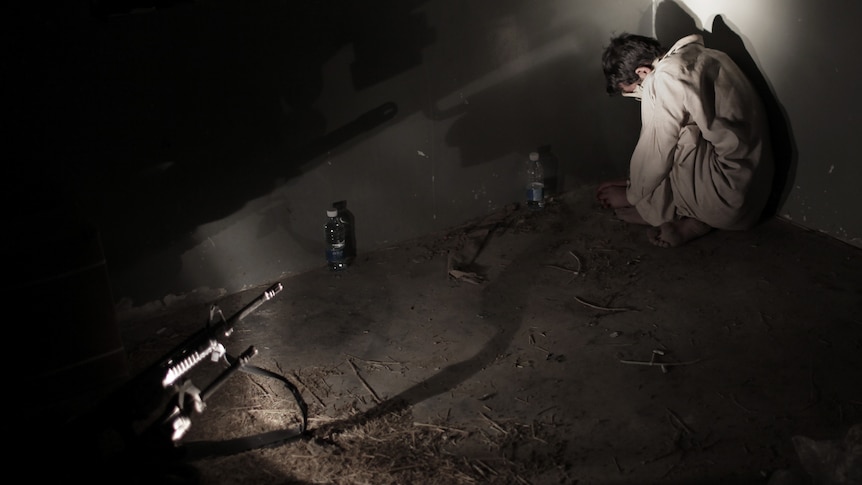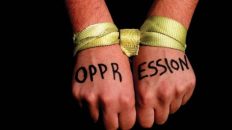Torture, historically wielded by governments and military entities to extract confessions, punish dissent, or terrorize populations, remains a persistent human rights violation despite global efforts to eradicate it. From ancient regimes to modern states, its ethical, legal, and psychological ramifications continue to provoke intense debate. Torture inflicts profound physical and psychological wounds on individuals while corroding the moral fabric of societies that tolerate it. Research consistently demonstrates its inefficacy (Hoffman et al., 2015), and international treaties like the United Nations Convention Against Torture (CAT) reflect a global consensus against its practice (UN General Assembly, 1984). Yet, in Pakistan—a CAT signatory—allegations of torture persist, particularly against the Baloch people, with survivors recounting devastating long-term effects (Human Rights Watch, 2021). Drawing on psychological theories, victim testimonies, and legal precedents like the ACLU case against psychologists of the CIA’s enhanced interrogation program, this essay examines torture’s use in Pakistan, focusing on the Baloch context, and explores its profound psychological toll on individuals and society.
Does Torure work?
Proponents of torture often argue it yields vital intelligence or deters dissent. However, empirical evidence refutes this claim. A comprehensive study by Hoffman et al. (2015) found that torture frequently produces unreliable information, as victims, desperate to end their agony, offer false confessions. Juan Méndez, former UN Special Rapporteur on Torture, underscored this in a 2014 report, stating that “torture produces the most unreliable and inaccurate information” due to its coercive nature (Méndez, 2014). Neuroscientific research further supports this, showing that extreme stress impairs memory and cognitive function, rendering tortured confessions dubious (O’Mara, 2015).
Beyond its practical failures, torture inflicts irreversible psychological damage. Survivors commonly develop post-traumatic stress disorder (PTSD), anxiety, depression, and, in severe cases, psychosis (Steel et al., 2009). These conditions not only thwart the goal of obtaining accurate information but also perpetuate a cycle of suffering that ripples through families and communities, amplifying the societal cost.
Enhanced Interrogation Techniques and Impunity: Lessons from the ACLU Case
The debate over torture’s efficacy and morality gained prominence with the CIA’s use of “enhanced interrogation techniques” (EITs) post-9/11, designed by psychologists James Mitchell and Bruce Jessen. These methods—waterboarding, sleep deprivation, and stress positions—were touted as scientific and effective, yet the Senate Intelligence Committee’s 2014 report revealed they produced little actionable intelligence while causing severe harm (Hoffman et al., 2015). In 2015, the American Civil Liberties Union (ACLU) filed a lawsuit (Salim v. Mitchell) against Mitchell and Jessen on behalf of three CIA torture survivors, alleging their methods violated international law and caused lasting trauma (ACLU, 2017). The case settled in 2017, marking a rare instance of accountability, though the psychologists faced no criminal charges.
Disturbingly, similar EITs appear in accounts of torture in Balochistan, practiced with impunity by Pakistani security forces. Reports document waterboarding, sensory deprivation, and prolonged stress positions inflicted on Baloch detainees (BHRO, 2019). A survivor, anonymously quoted in a 2021 Human Rights Watch report, described being “chained in a dark box for days, unable to sleep, with water poured on my face until I choked” (Human Rights Watch, 2021). These parallels suggest that techniques codified by Mitchell and Jessen have diffused beyond the CIA, adapted by states like Pakistan with no legal repercussions. The lack of accountability mirrors the U.S. failure to prosecute EIT architects, underscoring a global impunity crisis that emboldens torturers and deepens victim suffering.
Torture’s Toll on the Baloch: A Human Rights Crisis
In Pakistan, torture has been a documented tool of repression in Balochistan, where the Baloch ethnic minority has sought autonomy or independence since the 1940s (Amnesty International, 2020). Human rights organizations, including Amnesty International and Human Rights Watch, have cataloged widespread abuses by Pakistani security forces against Baloch activists, students, and civilians. Testimonies from survivors paint a harrowing picture. For instance, Zarina Marri, a Baloch teacher allegedly tortured in 2009, described being beaten and electrocuted to extract information about separatist activities (Baloch, 2011). Similarly, a 2019 report by the Baloch Human Rights Organization documented a young man’s account of sexual assault and waterboarding, leaving him with chronic nightmares and paranoia (BHRO, 2019).
These acts—beatings, electrocution, sexual violence, and psychological torment—aim to crush dissent but leave survivors with enduring trauma. Studies on torture survivors globally align with these accounts, noting high rates of PTSD (70-90%), depression (50-80%), and dissociative disorders among victims (Başoğlu, 2009). In Balochistan, this trauma fosters a pervasive climate of fear, with entire communities living under the shadow of abductions and “enforced disappearances” (Human Rights Watch, 2021). The psychological fallout extends beyond individuals, destabilizing social cohesion and trust.
The Psychological Effects of Torture on Individuals and Society
Torture’s psychological impact is both immediate and enduring. PTSD, a hallmark of torture survival, manifests in flashbacks, hyper-vigilance, and emotional detachment, often triggered by everyday stimuli (Herman, 1992). Depression and anxiety further compound survivors’ suffering, accompanied by shame and existential despair. Psychoanalytically, torture shatters the ego’s integrity, as described by Freud’s concept of trauma overwhelming the psyche’s defensive mechanisms (Freud, 1920). Victims experience a betrayal of their fundamental trust in humanity, a wound that lingers in their unconscious.
For Baloch survivors, reintegration into society is fraught with challenges. A testimony from a tortured Baloch student, anonymized for safety, reveals: “I can’t sleep without seeing their faces. I don’t trust anyone—not even my family” (BHRO, 2019). This aligns with Judith Herman’s (1992) observation that trauma isolates survivors, severing social bonds and amplifying alienation.
Societally, torture breeds a culture of silence and mistrust. In Balochistan, the fear of detention or betrayal stifles dissent and political engagement, weakening democratic institutions (Rejali, 2007). When state-sanctioned, torture erodes the rule of law, fostering a repressive environment where human rights erode unchecked.
Psychoanalytic Aspects: Torture’s Collective Impact on Baloch Society
Psychoanalysis offers a lens to understand torture’s broader effects on the Baloch collective psyche. Freud’s theory of collective trauma posits that shared violence embeds itself in a group’s unconscious, resurfacing as pervasive anxiety or aggression (Freud, 1921). In Balochistan, decades of torture and disappearances have forged a communal trauma, evident in the widespread fear and hopelessness reported by residents (Balochistan National Party, 2020). Repressed memories of violence, as Freud suggests, manifest indirectly—through social withdrawal, mistrust, or cycles of retaliatory violence.
Paul Ricoeur’s narrative identity theory further illuminates this dynamic. Torture fractures the Baloch community’s ability to weave a coherent collective story, as survivors and families struggle to integrate their suffering into a meaningful narrative (Ricoeur, 1992). A Baloch mother whose son vanished in 2017 lamented, “We have no history left—just pain” (Human Rights Watch, 2021). This narrative rupture perpetuates a victimhood identity, hindering healing and reconciliation.
Moreover, object relations theory, developed by Melanie Klein, suggests that systemic violence distorts interpersonal trust (Klein, 1946). In Balochistan, suspicion permeates relationships—neighbors fear informants, families dread betrayal—creating a paranoid social fabric that mirrors Klein’s “schizoid position.” This psychological fragmentation undermines community resilience, leaving the Baloch vulnerable to further oppression.
Pakistan’s Obligations Under the Convention Against Torture
Pakistan ratified the CAT in 1997, pledging to prohibit torture and prosecute offenders (UN General Assembly, 1984). Yet, reports from Balochistan reveal systemic violations, with impunity for security forces (OHCHR, 2022). The CAT mandates investigations and victim redress, obligations Pakistan has largely neglected, drawing criticism from the UN Committee Against Torture (2017). This failure not only breaches international law but also risks diplomatic repercussions, including sanctions or diminished foreign support.
Conclusion
Torture is an ineffective, unethical practice that inflicts irreparable harm. The ACLU’s case against Mitchell and Jessen exposed the flaws of enhanced interrogation techniques, yet their echoes persist in Balochistan, where similar methods are used with impunity. Victims endure profound psychological wounds—PTSD, depression, and alienation—while communities grapple with collective trauma, mistrust, and narrative fracture. Pakistan’s flouting of the CAT underscores the urgency of accountability. Globally, rejecting torture is essential to uphold human dignity, a goal that demands both international pressure and accountability for crimes against humanity. Only through such efforts can the cycle of suffering end, allowing societies like the Baloch to heal.
References








Add comment